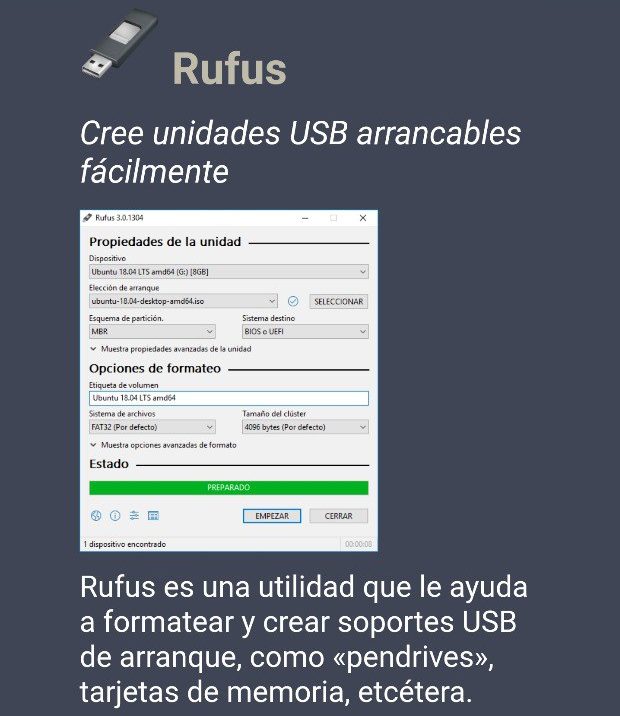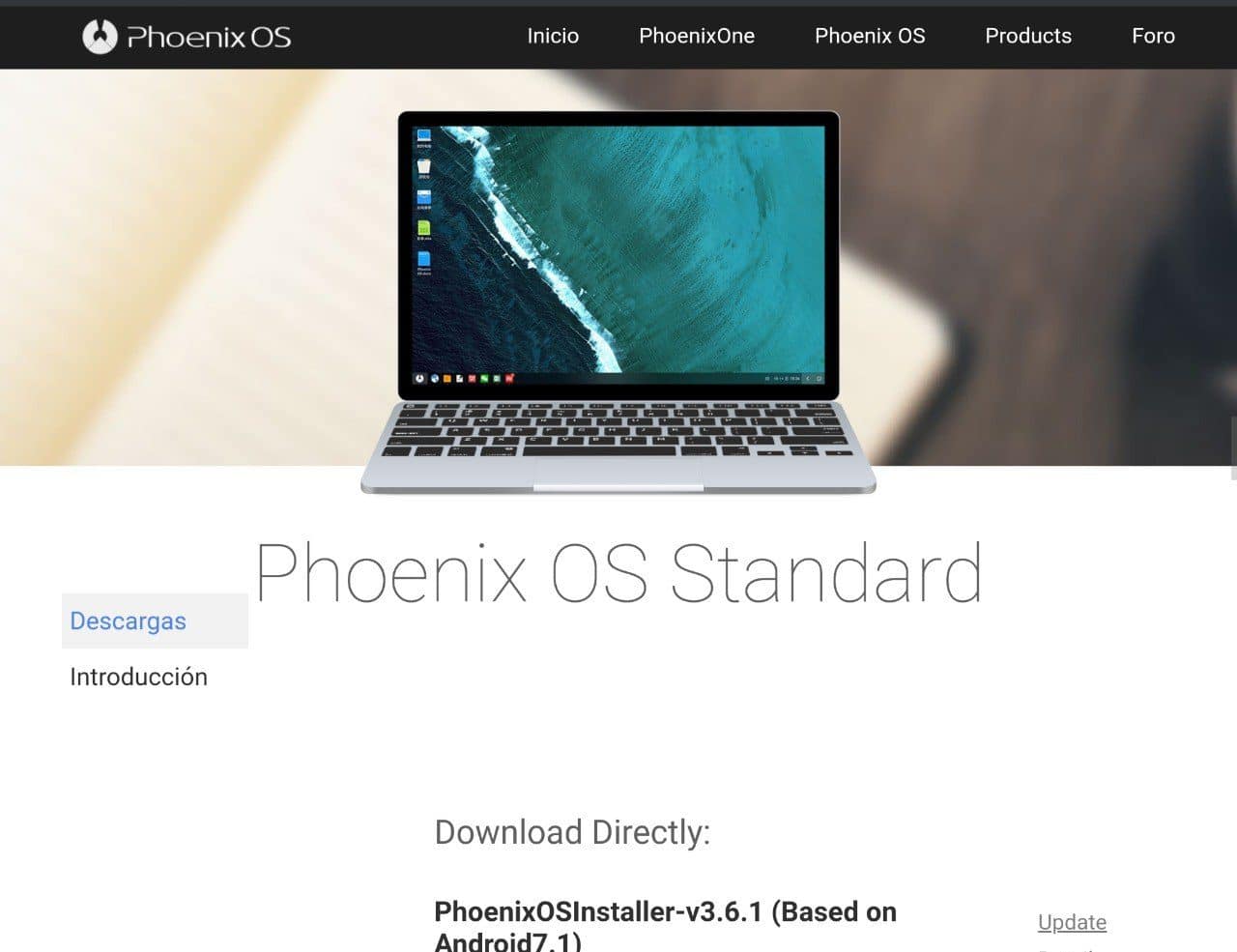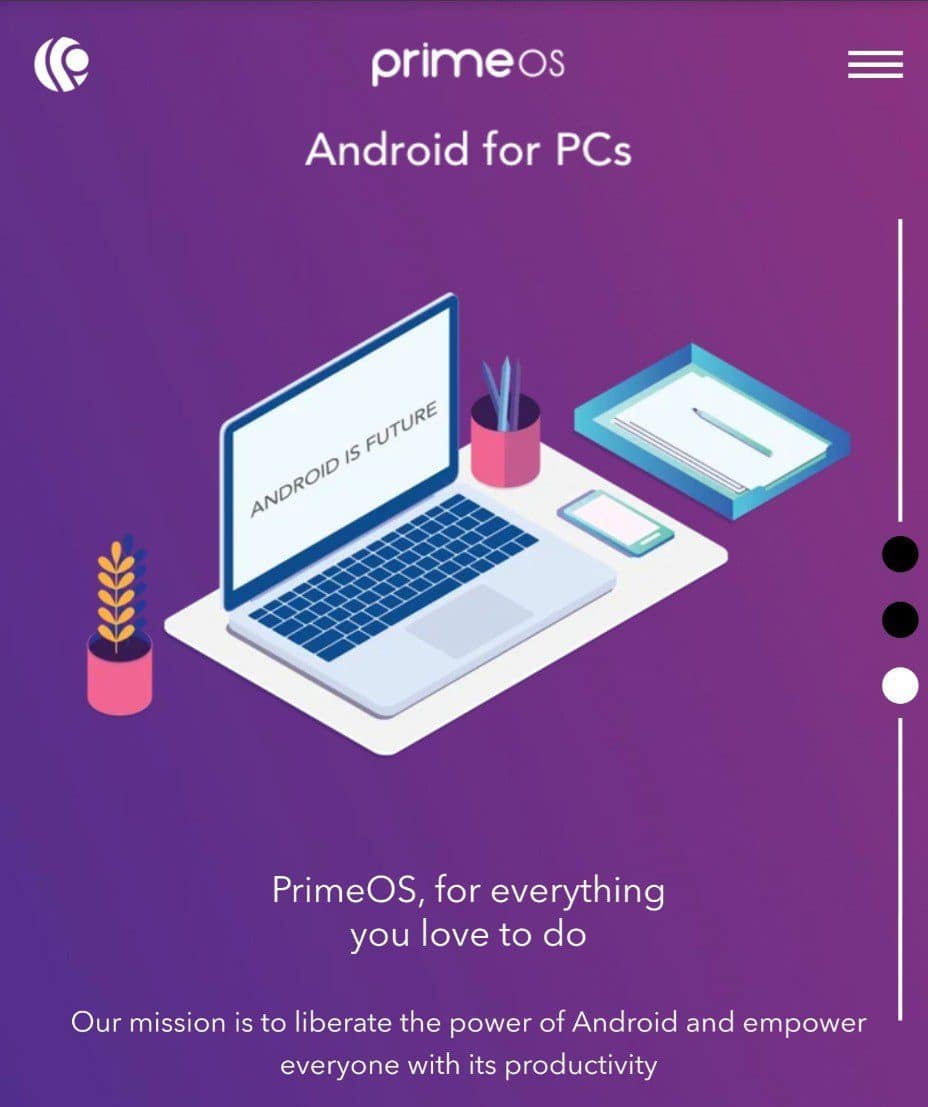If you like the Android operating system and want to try it out on your personal computer, you're in luck. Today we are going to see how you can install this system on your PC thanks to a stable version that it offers us Android X-86.
Thanks to them you will be able to mount the system Android on your personal computer, and check how the applications and other programs work through your monitor. It is also one of the most reliable and stable versions that we have so far.

Android-x86 9.0 is a GNU / Linux distribution open source and free to use, based on official Google development, Android Open Source Project (AOSP) 9.0 Pie, which allows us to install it on personal computers, laptops or tablets with x86 architectures, Intel or AMD processors.
The version of Android to install will always be an earlier version than the ones our smartphones have installed today, since they are more modern, and this is so due to the difficulty of being able to transfer the Android system to a personal computer, including all the support you should have.
And this is so because Google does not collaborate or work on it, if not they are external projects and they are obviously not official.
Steps to install Android on PC
As we said, in this case Android-x86 (Android Version 9) comes in image format, that is, in .ISO and .RPM formats, for the different 32-bit and 64-bit versions.
You can install it in different ways on your computer:
- As a single operating system, or coexisting with the system you have installed, either Windows or Linux.
- Through virtual machines.
- Or you can simply test it from a Live-CD / USB, that is, a bootable USB stick. With this option you will not need to alter the installed operating system.
You will be able to select an automatic option that determines the boot with Android in an available partition of your hard disk, that coexists with another operating system, use an independent boot pendrive or choose if you want it to be the only operating system for your PC.
To install you don't have to do anything complicatedIn fact, it is very similar to any version of the Operating System that can be installed on today's computers.
Tan you just have to download the 32 or 64 bit image, and save it on the media of your choice, either on a CD, or on a pendrive, or on an external hard drive, which you can use to run it directly from the same medium or to install it permanently on the computer.
If your computer mounts Windows operating system, in an original way It is recommended to use Win32 Disk Imager to create the installer with the .ISO images, although you can use other similar applications like Rufus.

If, on the other hand, your computer mounts Linux system You can use the 'dd' command on your PC with the command "$ dd if = android-x86_64-8.1-r1.iso of = / dev / sdX", where sdX is the name of your USB device.
The .RPM format is also available and is installed like any other package in distributions such as Fedora / Red Hat / CentOS / SUSE (if you are a Linux user you will know it).
Alternatively run it in a virtual machine (WMware, Virtual Box ..), which is one of the most recommended methods since you will be able to do whatever tests you want without having to touch your computer, either with Windows or Linux systems.
It has been possible to improve the support and version of Android-x86, from the previous version available, since it now offers specific instructions to make it work correctly the image in VirtualBox. To be able to see them click here.
As indicated in those instructions «The following are instructions on how to run Android-x86 within VirtualBox.
Note: For optimal performance, make sure you have enabled VT-x or AMD-V in the BIOS of your host operating system. »
As you can see, with any of these methods you can use the Android operating system on your PC just like on your own smartphone, but in this case it will be on a desktop computer or laptop, with your mouse and keyboard.
You just have to configure that the boot does it from the selected option, if you opt for the removable USB option, and then it will load
And best of all, with access to apps and games from the Google Play Store.
You must bear in mind that this Android 9 system mounted on a PC it is not a definitive alternative to a Windows or Linux operating system. Even so, it is one of the best ways you have at your disposal to be able to run Android on a PC.
As advice I will tell you to try it, if it is your wish, on an old computer or that you have discarded as a computer to work, and have it cornered or to do tests that you would not do with your main computer, since Android can work with some requirements of pretty simple hardware.
This system and version of Android to install on PC is the most stable, and with available Google services, to be able to download games and favorite apps from your smartphone. However, there are other options that we are going to know below.
Phoenix OS

You can also do it through Phoenix OS, which on its website gives you the option of downloading the executable file onto a USB pen-drive or a portable hard drive, which you just have to plug into your computer.
The best thing about this system is that you do not install anything on your computer, you simply run the program that is located on the external drive, and in a few minutes you will have a visible and functional Android environment at your disposal.
However, the available version is based on Android 7.1 or 5.1 depending on the architecture of your PC., that you can use one or another version. It will still recognize the Wi-Fi signal, USB ports, etc.
It may not work entirely correct, as it should be more developed and Google products are not included in this Phoenix OS system.
PrimeOS
PrimeOS It is a version of Android whose purpose is that it can be installed on low-power computers, although you can do it on the computer you want, of course. According to different tests, it has been proven that it works in computers from 10 or 15 years ago, since all you need is to mount a Pentium processor.

It is not an Android virtual machine for mobile, as it is based on Android 7 Nougat, It is a kind of hybrid of Android, with a desktop PC interface.
You can install PrimeOS in the same way as the previous ones, on a partition of your PC's hard drive to start up with Windows or the desired system, or install it on a USB that you can use when you want to use this operating system.
As you can see, how to install and use are all the same, as we explained at the beginning of these lines.
For this system there are three versions, among which you will have to choose depending on the age of your PC:
- Classic version for those computers that were sold before 2011.
- Standard version, for computers from the years 2011 to 2014.
- And the 64-bit version, for those that were sold after 2014.
Once installed, PrimeOS you will be running a desktop operating system, which you can use with your mouse and open all the windows that your PC memory allows, at your disposal you have a task bar and a Start menu.
The advantage of PrimeOS is that, as we said, it is not an Android emulator, but a native Android version, installable and executable that makes apps and games work faster and more effectively.
This Android operating system It has its own ecosystem called Gaming Center, with a utility that allows you to use and run most of the most popular Android games, even PUBG, which you can play using your keyboard and mouse and be a potential killer.
You know, give an extra life to that computer that you may have at home, and that you no longer use, or is simply cornered. Enjoy them a little more, with the Android operating system.